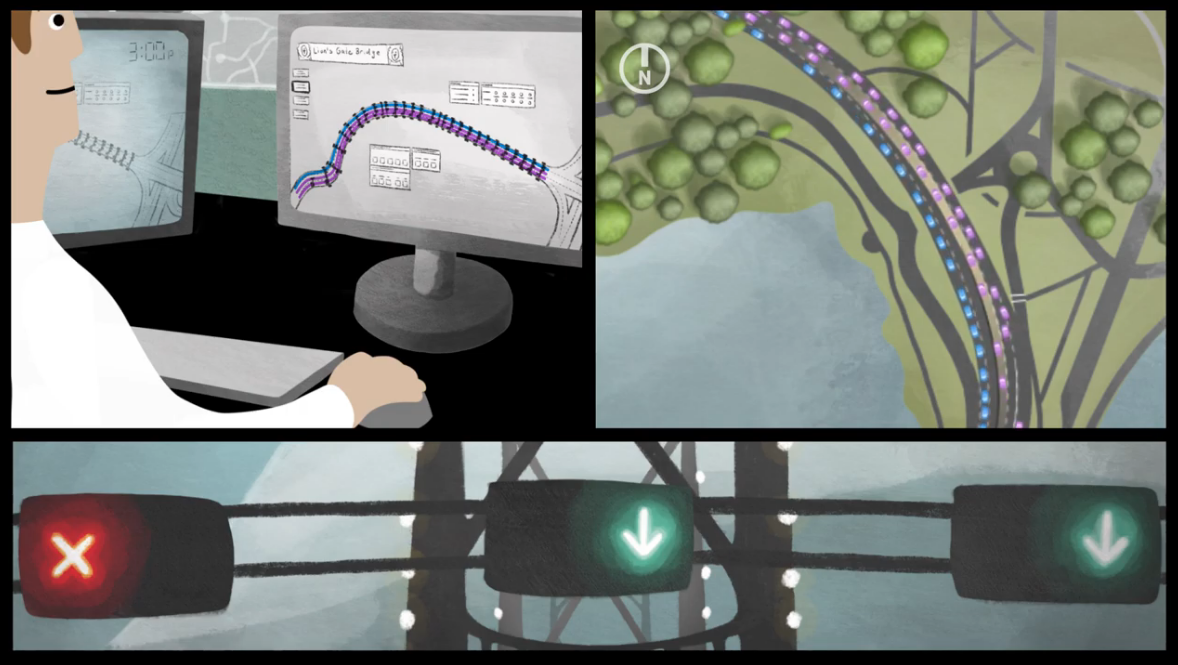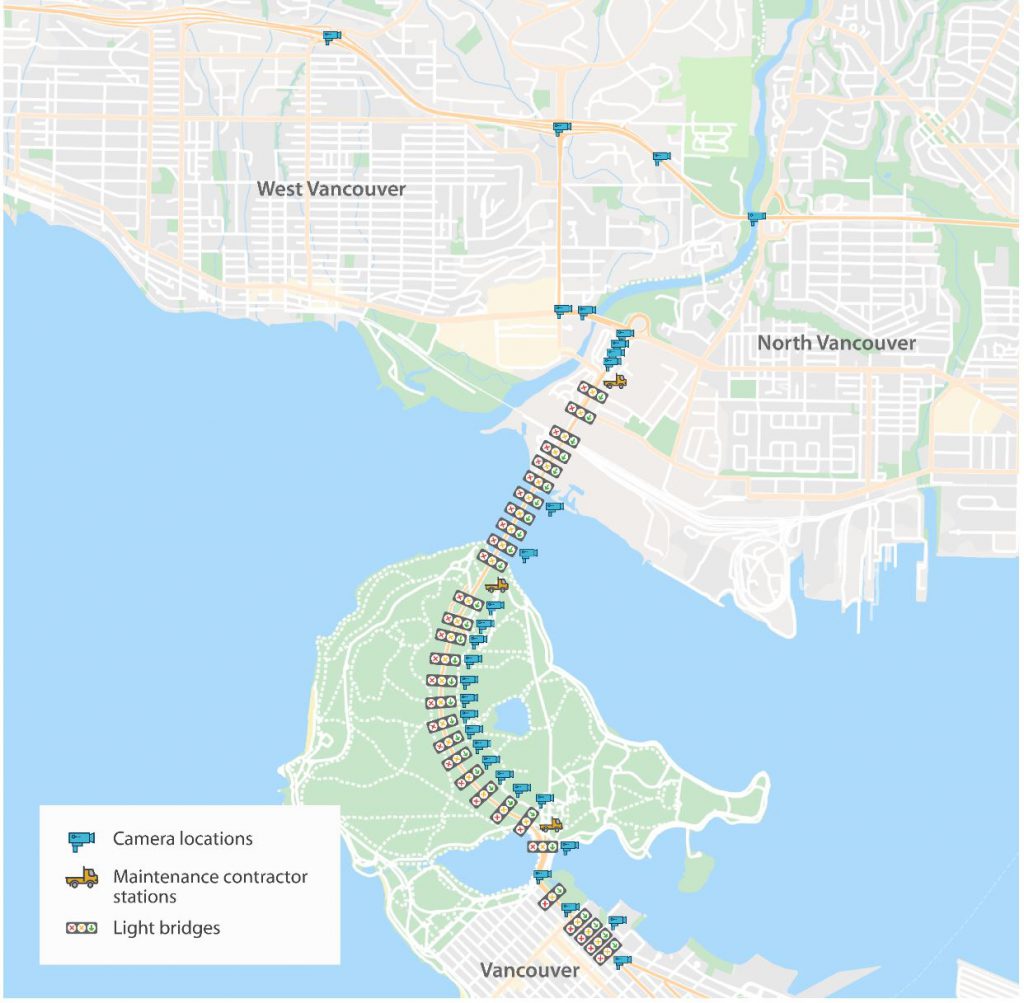
Ever wonder how we manage the Lions Gate Bridge lane control system? Let us explain.
Watch our animated explainer video on YouTube:
Who operates the counterflow?
Miller Capilano Highway Services, our local maintenance contractor, monitors more than 40 cameras on the bridge and surrounding roads from the Transportation Management Centre of British Columbia (TMCBC). They are responsible for manually changing the lane directions based on traffic volumes and safety. Two crew members are also stationed at either side of the bridge between 6 am and 10 pm, helping clear vehicle incidents, stalls and debris from the bridge as safely and efficiently as possible. They also help with traffic support for emergency services when needed.
Now that we’ve got that straight, let’s talk about counterflow timing…
Weekday morning operations
During the weekday morning commute at 6 am, we provide two lanes southbound on the Lions Gate Bridge for morning commuters. At the same time, the City of Vancouver provides an extra southbound lane on Georgia Street to help with the flow of traffic. With a quiet and less congested downtown, southbound commuters can flow steadily over the bridge and continuously into the city.
At around 9:30 am, the City of Vancouver removes the extra lane on Georgia Street. At the same time, we switch over to two lanes in the northbound direction on the bridge.

Weekday afternoon/evening and weekend operations
After the 9:30 am switchover, the lane control operations on the bridge become dynamic, which means the lane operators choose the direction of the middle lane based on how traffic unfolds.
When the workday winds down, we generally have the centre lane open in the northbound direction for traffic leaving the city. When two lanes are provided for northbound traffic, the North Shore can easily disperse commuters with two separate major routes and Highway 1. That said, we do change the centre lane to the southbound direction every so often so traffic heading downtown doesn’t back up onto Highway 1, causing major delays and safety issues.
Here’s the challenge: we need to keep the centre lane traffic running fairly smoothly at all times so that it can be easily cleared for emergency vehicles at a moment’s notice. Heavy centre lane traffic, which tends to happen most in the southbound direction, significantly increases the time it takes to clear.
Weekends can be particularly challenging, as the active downtown core can be at capacity at any given time. Although we predict higher volumes during sunny days and for special events, once the downtown core is full, it is difficult for traffic to move in and out from any direction, let alone using the Lions Gate Bridge.
Emergency personnel communicate with counterflow operators to coordinate crossing times. By monitoring and ensuring the centre lane doesn’t reach the point of bumper-to-bumper traffic, it can be cleared quickly for emergency vehicles.
Counterflow is a balance. There is an ebb and flow to Lions Gate Bridge traffic that the counterflow operators’ understand and manage based on their experience and access to many strategically placed cameras throughout the corridor.
Weekday overnight operations
During weekdays, the centre lane of the Lions Gate Bridge is closed from 12 am to 6 am so emergency services can easily cross the bridge without having to wait on operators. Due to the lower volumes of traffic, this procedure does not cause delays.
So, there you have it! The rhyme and reason to the Lions Gate Bridge lane control system. Did we miss anything? Let us know in the comments below.
Join the discussion